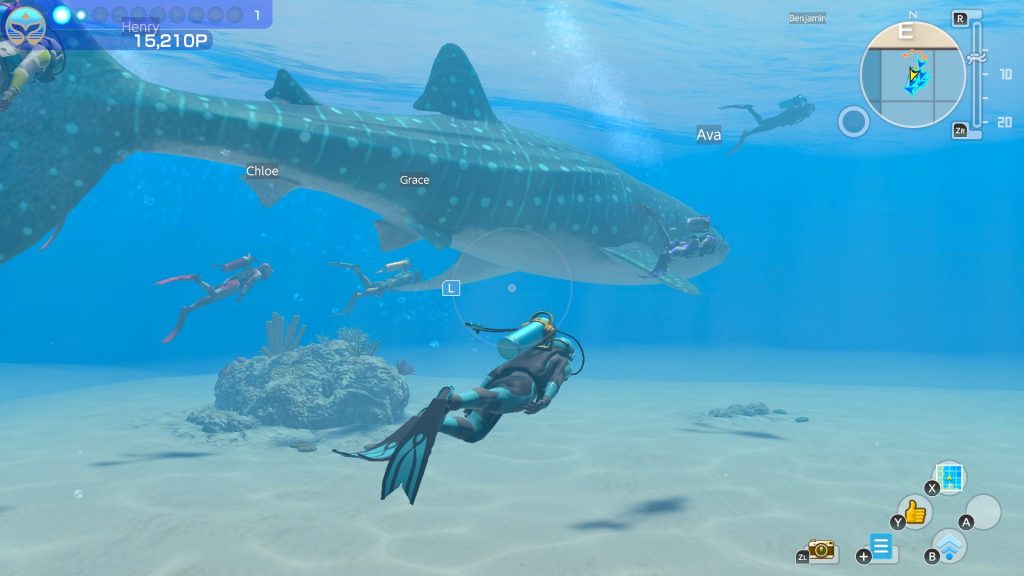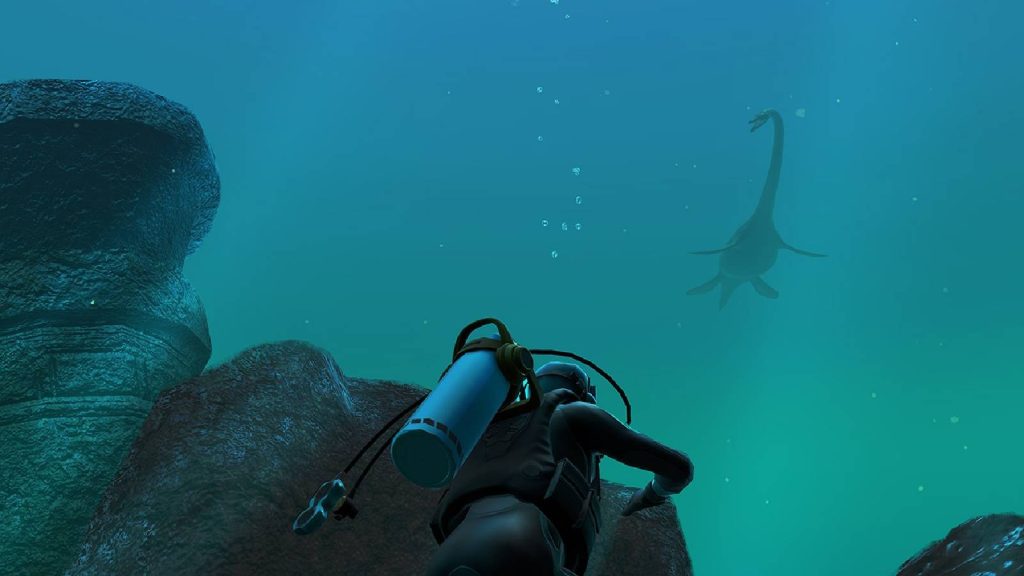in the middle of the advent of comfortable games, farm simulations, rhythm games, narrative adventures and much more, we are in a golden age of non-accipitral games. If you want to take a break from striking and punching and just relax with some relaxed vibes instead, there are tons of options available to you. Endless Ocean: Luminous is an aquatic setting that allows you to freely explore the ocean without harmful or roughness. He sometimes straddles the line in the middle of gaming and edutainment in a way that might be appealing, but painfully slow progression and a lack of realism make him feel failed.

Scientists say that only 5% of the ocean is explored. The name Endless Ocean and the unexplored nature of the ocean itself suggest an incredible level of possibilities and adventures. In practice, however, there is not much to do in Endless Ocean: Luminous. You can participate in a Solo dive where you explore a seemingly random map. a shared dive that is just a Solo dive with friends exploring the same map together online with Nintendo’s Switch Online service (with the usual flaws); and the story mode, which offers you short missions composed of objectives accompanied by a small dialogue.
With this lack of options, his approach to progress control further reinforces the lack of variety. After the first handful of story missions, the others are locked behind scanning for sea creatures in joint or Solo dives. To scan, simply press and hold the L catch towards the marine life until the meter fills up, which gives you a detailed overview of the creatures in your scan. But the gates of progress are so foolishly high that the novelty quickly fades. One of the first doors is set at 500 Scans, which seemed high but reasonable. The next one was at 1,000, so I had to get 500 more. It rubbed me in the wrong direction. By the time I reached the next door, which was set to 2,000 – meaning I needed another 1,000 scans – the cold vibrations had disappeared. I was just annoyed. It’s hard to overstate how frustrating it is to spend almost an hour scanning fish on a random map, only to come out of the map and discover that I’ve only earned another 200 Pips for my next story goal. In addition, according to the creature log, there are a total of just under 600 species of marine life in the game. Why would you need to scan 2,000 times to see a mid-game story mission?
Not that there’s much to say. You are a new diver accompanied by an AI companion who explores the phenomena of shiny fish, and sometimes you are accompanied by another brash (but actually cowardly) diver named Daniel. The missions in the story are short and largely uneventful. Sometimes they end so quickly that I was really surprised. Other times they look like a glorified tutorial, which makes it all the more strange to place it behind so much free play time. At least one of them is just a cutscene without any Diving gameplay. Sometimes the story mode offers something unexpected and fun, like a giant or fantastic species of fish, but these moments are rare. There is a meta-story with an ancient relic with 99 slots that you fill by discovering specific artifacts scattered randomly during dives or by completing performance goals.
And because the scanning requirements are so high, the small drawbacks seem more impactful than they should be. It is easy to pick up a fish that you have already scanned while trying to save a new one. Every time you scan a fish, it zooms in momentarily, forcing you to press B to exit the detail view. When you scan multiple species at once, they are grouped in a List, which is supposed to be a convenience feature – but new species are not prioritized in the List, so you have to scroll down to find them with a “???”designation to label them as discovered. If you do not do this, the unidentified fish will remain unidentified. If you scan a large school of the same fish, they will all be listed separately. In solo dives, the map is slowly mapped out in segments as I explore it, but if I keep an eye on the map to make sure I fill in the small squares, I couldn’t notice a fish swimming or miss a change in depth.it might honour me for a deeper dive.

Your dives will give you experience points to level up, which will increase your diving ability, which will allow you to mark the marine animals swimming next to you. Initially, this includes only the smallest marine animals, but as you develop abilities, you can swim with larger ones, which are used to solve puzzles. A stone tablet could challenge you to come back with a certain species of turtle or a fish that “navigates by swimming”.”But even in this matter, the solutions are too rigid. When I returned to the tablet with a “sailboat”, nothing happened, probably because it was not the specific solution that the puzzle had in mind.
In addition to the story progression and the diving ability, the upgrade also opens up new levels of customization options, but very limited. This includes the exchange of paddles for your diver or individual parts of your wetsuit, various stickers to put on your Profile and Emotes. There is not even another helmet or mouthpiece, just the default in different colors.
It seems that the goal was to create a virtual and interactive water museum, and the diversity of marine life supports it well. It’s really exciting when you first see a new species of sea turtle or an extinct megalodon shark, even if you know that it can’t harm you. But the mechanical bases also hinder its potential as a museum. For example, each species of fish has a blurb with interesting marine facts, with a reading from their AI companion. This could be an interesting and educational feature, but when you are forced to do thousands of analyzes, it is difficult to listen to each blurb. There is also no indicator of when you have already heard a blurb, and since the species repeat themselves frequently, it is almost impossible to remember which ones you have or have not heard – although you can distinguish dozens of similar-looking fish, which I cannot.
Partly because of its non-accipitral nature, Endless Ocean does not represent the depths in a very realistic way, even to my layman eyes. Your oxygen is unlimited and you don’t have to worry about temperature or depth. You will never freeze, suffer from decompression sickness or drown. More aggressive species will never action you. The fish species seem to be scattered more or less randomly on the map, which leads to oddities such as finding large-scale creatures in shallow waters or spotting deep-sea creatures at medium depths instead of the deepest, almost black parts of the ocean, where they are actually found. And although this is probably a limitation of the Switch material, the fish, the corals and the seabed themselves are not rendered in a photorealistic way to give a feeling of awe and majesty.
It seems that Endless Ocean wants you to dive with friends most of the time to pbody the time. After all, the Joint dives option is the first on the menu, and it is easier to achieve the simple procedural goals when you are paired with other divers. But like most Switch games, you participate in friendly matches with a digital Code, and there is no built-in voice chat, so you can’t really treat it like an underwater virtual lobby. Even if you could, scanning fish with your friends wouldn’t keep the group fun going for anyone but the most dedicated marine life.

Endless Ocean: Luminous could have been a realistic diving simulation with all the treacherous harmfuls that real scuba divers have to consider, a relaxing and relaxing game that mainly involves finding fish with your friends, or a story-based game that involves discovering fantastic and even extinct underwater animals. He has parts of it all, but he’s not committed to any of them. Instead, he takes on the enormity and glory of the largest and most secret region on earth, turning it into a boring and repetitive task.

